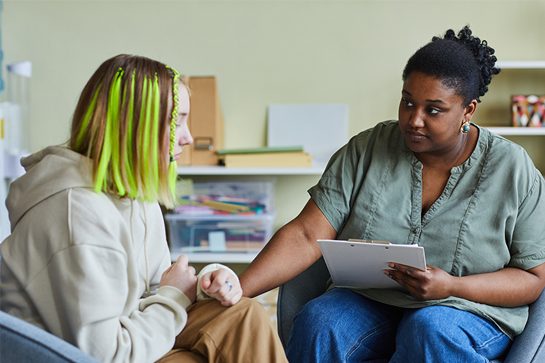According to the Stanford Center for Youth Mental Health and Wellbeing, we are in the midst of a national public health crisis for young adult wellness and mental health support. High rates of depression, alcohol and drug abuse, teen pregnancy, youth violence, and low college graduation rates indicate that something is missing in the care and support of young people. US Health and Human Services (HHS) Secretary, Tom Price, comments, “One of the Department’s top three clinical priorities is serious mental illness, and we know that many mental health conditions first appear in childhood or youth.”
According to the Substance Abuse and Mental Health Services Administration (SAMHSA), in 2014 approximately 9 percent of adolescents (ages 12 to 17) and 22 percent of transitional aged youth (ages 18 to 25) reported current illicit drug use. In addition, among adolescents who were diagnosed with a substance use disorder in a prior year, approximately 28 percent had a co-occurring major depressive episode.
In an effort to combat this trend, HHS has prioritized five strategies to turn the tide on this public health crisis: strengthening public health surveillance, advancing the practice of pain management, improving access to treatment and recovery services, targeting availability and distribution of overdose-reversing drugs, and supporting cutting-edge research. To support these strategies, the Substance Abuse and Mental Health Services Administration recently announced two separate grants to improve the integration and efficiency of substance use disorder treatment, recovery, and support systems for youth with substance use disorders and/or co-occurring substance use and mental disorders.
On June 9, 2017 SAMHSA awarded 10 states and the Kickapoo Tribe of Oklahoma up to $34.4 million over four years to improve treatment for adolescents (ages 12-18) and transitional aged youth (ages 16-25) with substance use or mental disorders. The awards were issued through the SAMHSA grant program Cooperative Agreements for Adolescent and Transitional Aged Youth Treatment Implementation.
On June 13, 2017 HHS awarded an additional $72.5 million in grants through the Expansion and Sustainability of the Comprehensive Community Mental Health Services for Children with Serious Emotional Disturbances Program, also known as the Children’s Mental Health Initiative (CMHI). SAMHSA will distribute the funding to seven states and one local government agency to improve outcomes. The grants will support mental health and related recovery support services for concerned populations including those showing early signs and symptoms of serious mental illness. Grantees will also provide services and referrals for families caring for these youth.
Example: Hawaii
Using their $3.04 million grant from SAMHSA, Hawaii’s Department of Health’s Alcohol and Drug Abuse Division (ADAD) implemented an aggressive strategy to fight youth mental health concerns. The goal is to create a comprehensive system of coordinated care services to meet treatment and recovery needs. Throughout the project, ADAD will coordinate mental health and substance use disorder services with the department’s Child and Adolescent Mental Health Division, Family Guidance Centers, and four drug and alcohol treatment centers.
“Our goal is a statewide system of treatment,” says ADAD Chief Edward Mersereau. “This grant will allow us to expand the Hawaii Adolescent and Transitional Aged Youth Treatment Implementation project to increase rates of abstinence, enrollment in education, vocational training, employment and social connectedness—along with decreasing criminal and juvenile justice involvement among our youth.” Mersereau continues, “The result of this project will be higher cross-professional training in substance use disorder treatment practices, a more proactive approach to preventative healthcare, a concrete referral system that leaves little room for patients to fall through the cracks, and expanded use of health information technology for better informed decision-making at the point of care.”
Additional recipients receiving funding to coordinate care for youth with substance use and/or mental health issues include Connecticut, Michigan, New Mexico, Rhode Island, Utah, Virginia, Wisconsin, Massachusetts, Minnesota, Mississippi, Montana, Ohio, Pennsylvania, Texas, and Carrol County in Maryland.
Our youth are our future. We applaud all those engaged in supporting families and individuals struggling to overcome mental health and substance use disorders.
Blog Resources
https://www.samhsa.gov/newsroom/press-announcements/201706131100-6
http://www.publicnow.com/view/DE3D5DD84BEEA9E1FF6EE0ACB30DD3F730FA644A?2017-06-13-17:30:08+01:00-xxx7325
https://www.samhsa.gov/newsroom/press-announcements/201706090100
https://ohsonline.com/articles/2017/04/25/hhs-awards-grants-to-combat-opioid-crisis.aspx
https://med.stanford.edu/psychiatry/special-initiatives/youthwellbeing.html



